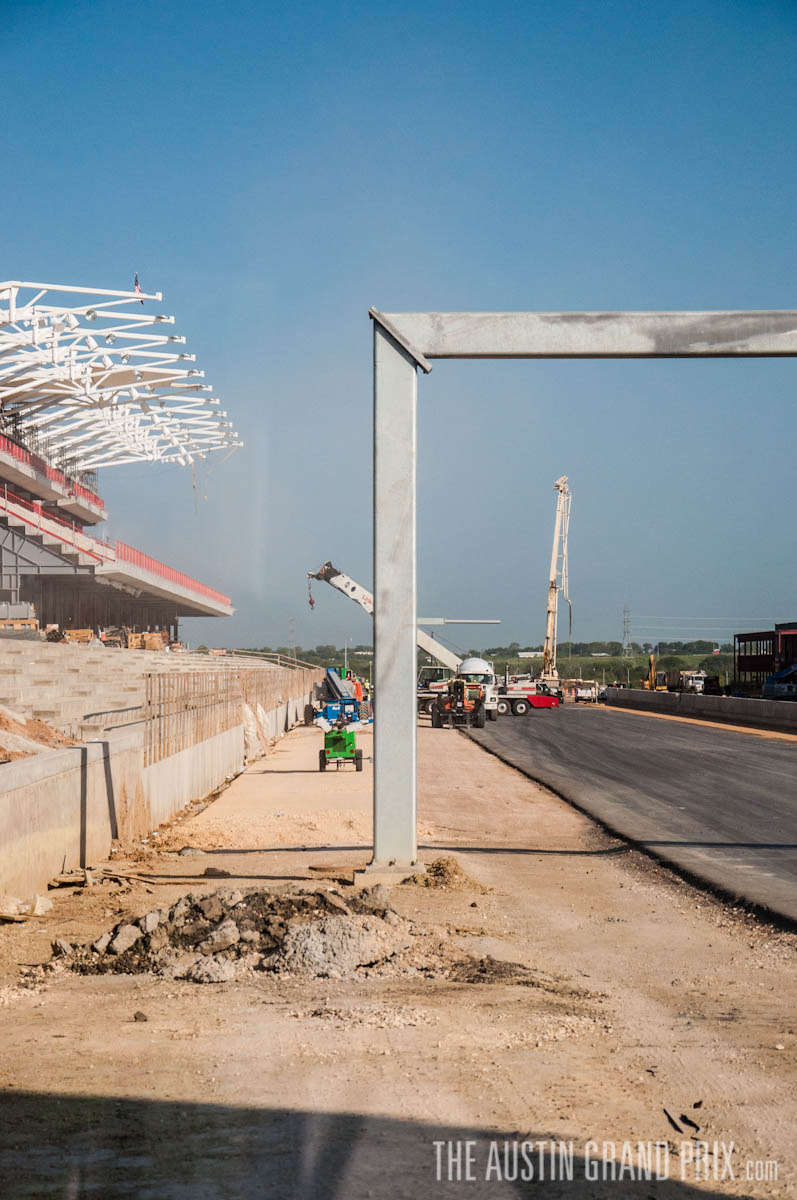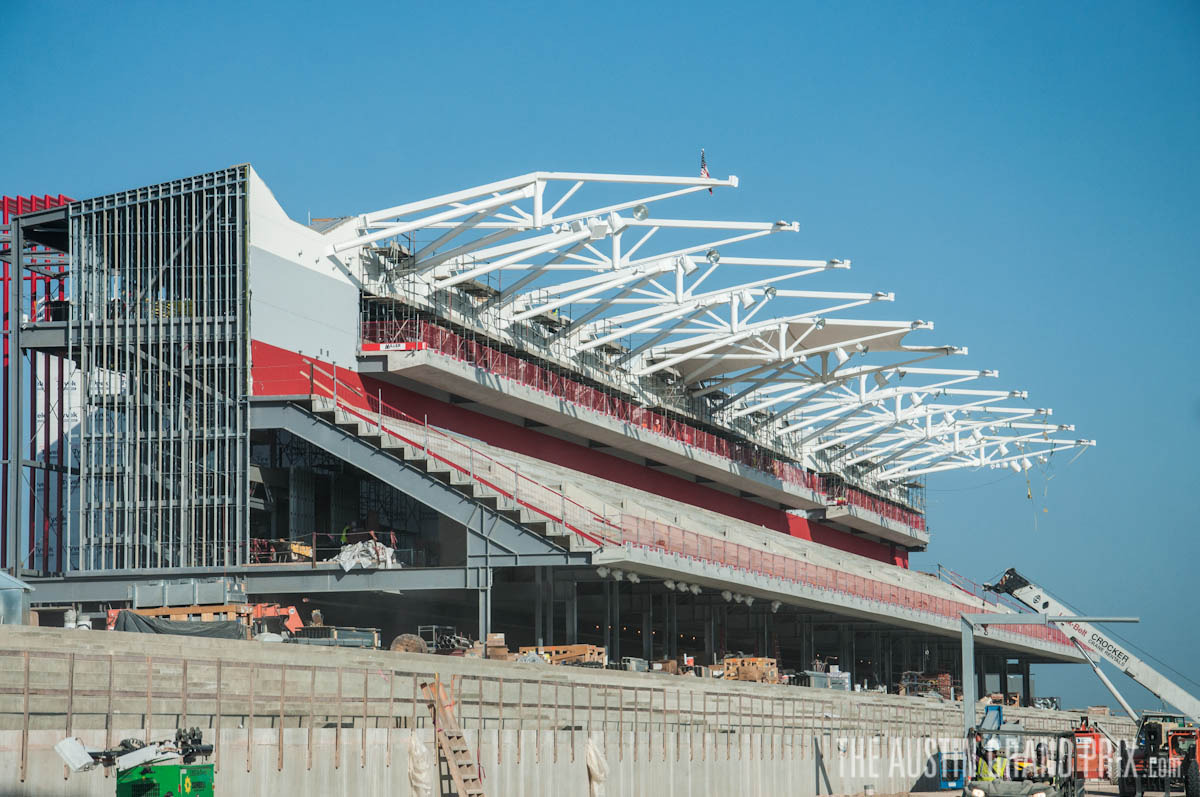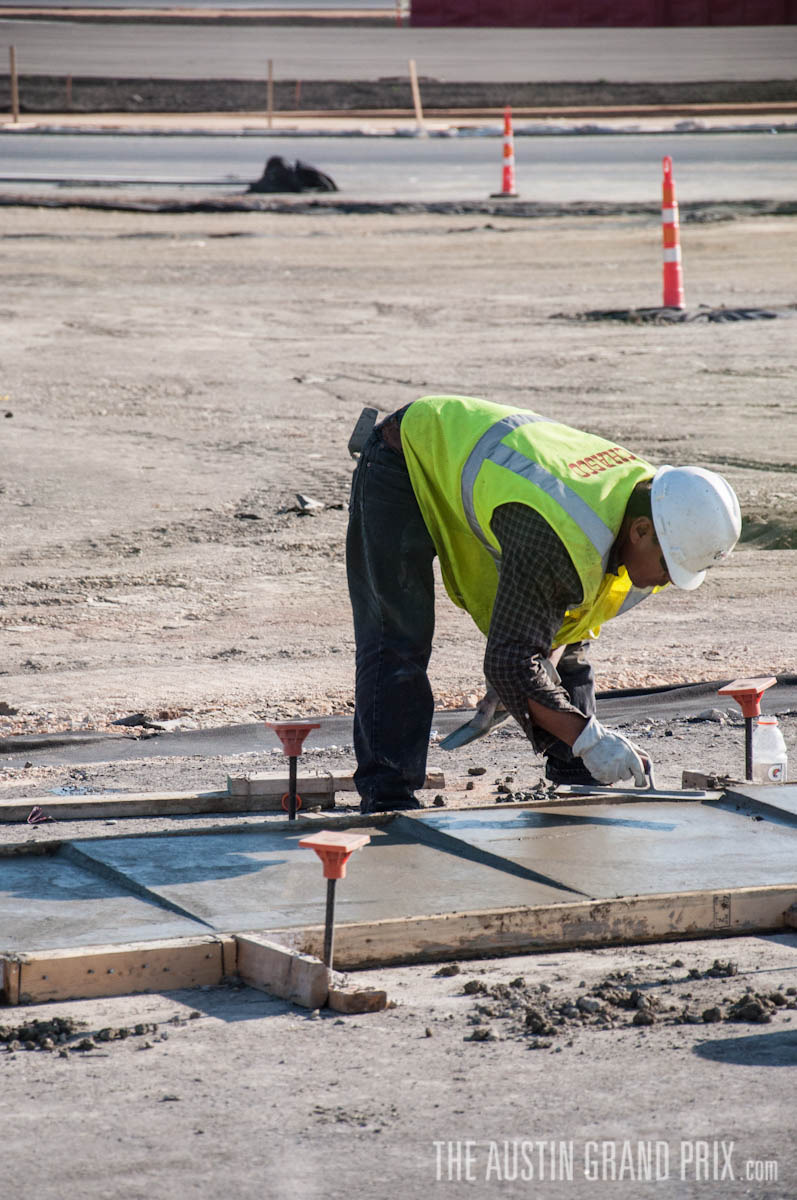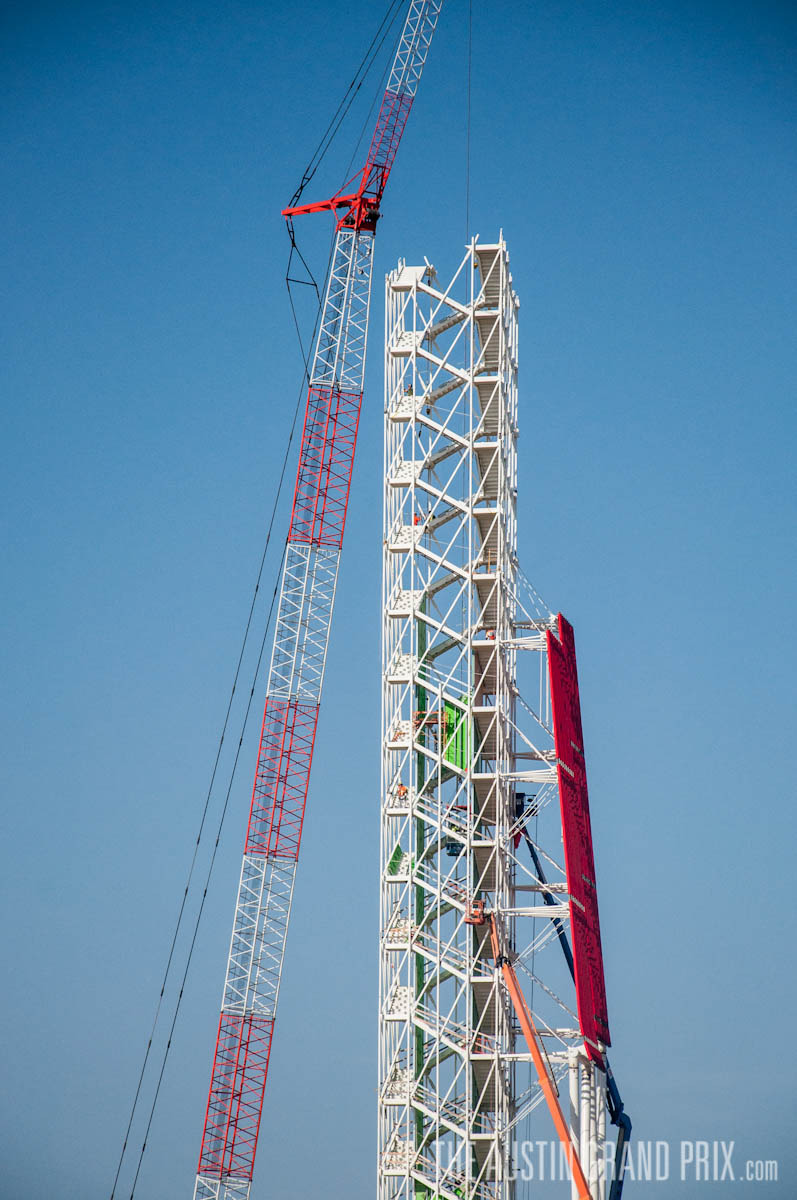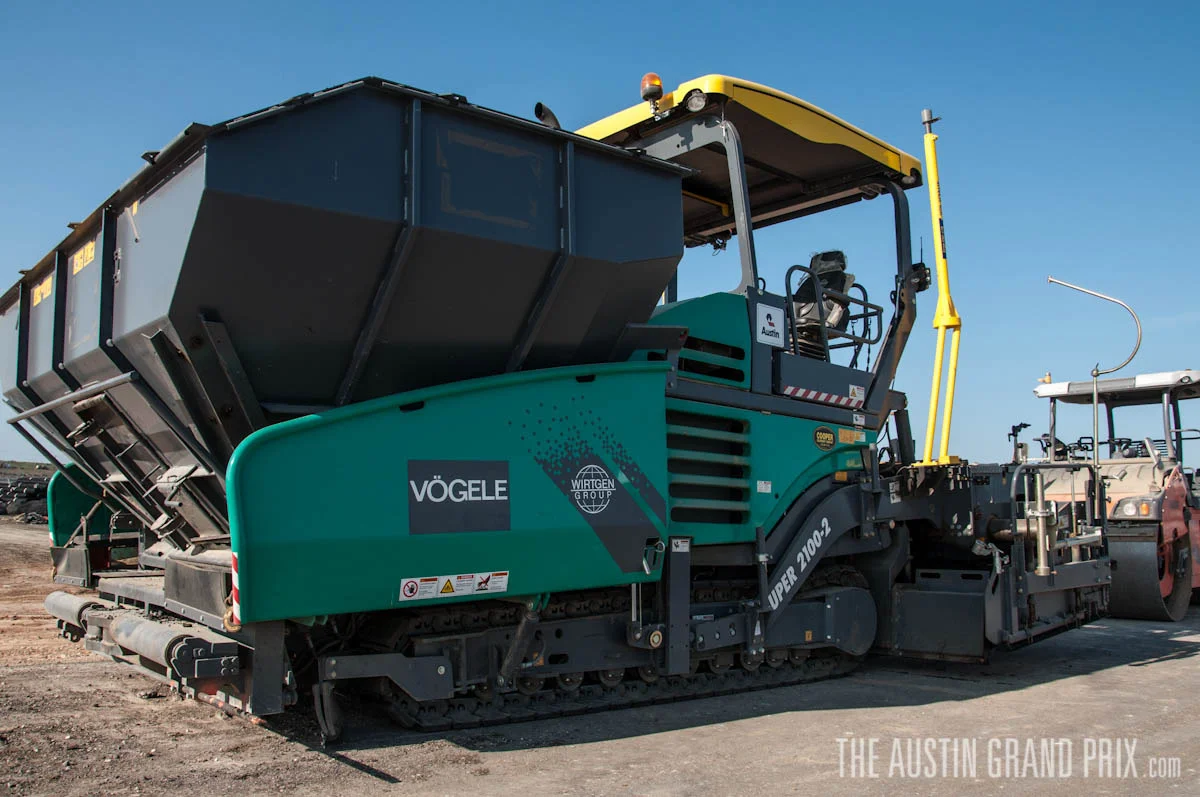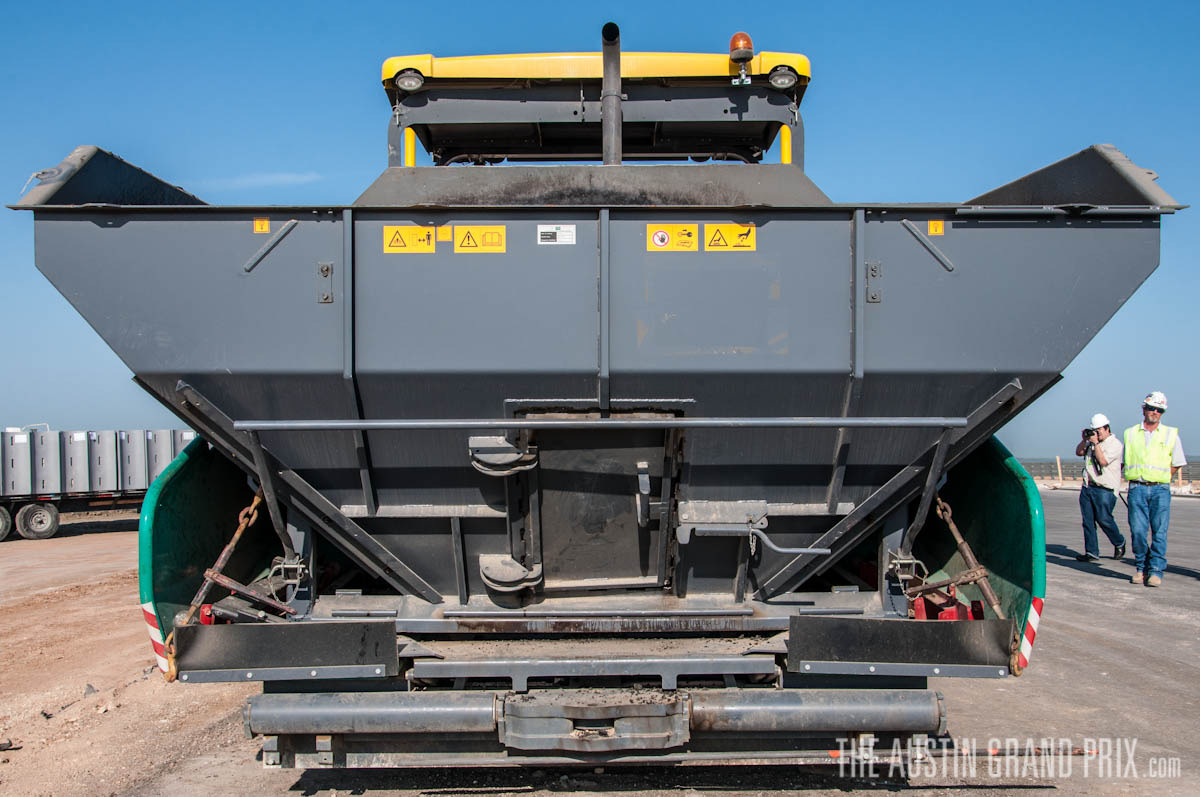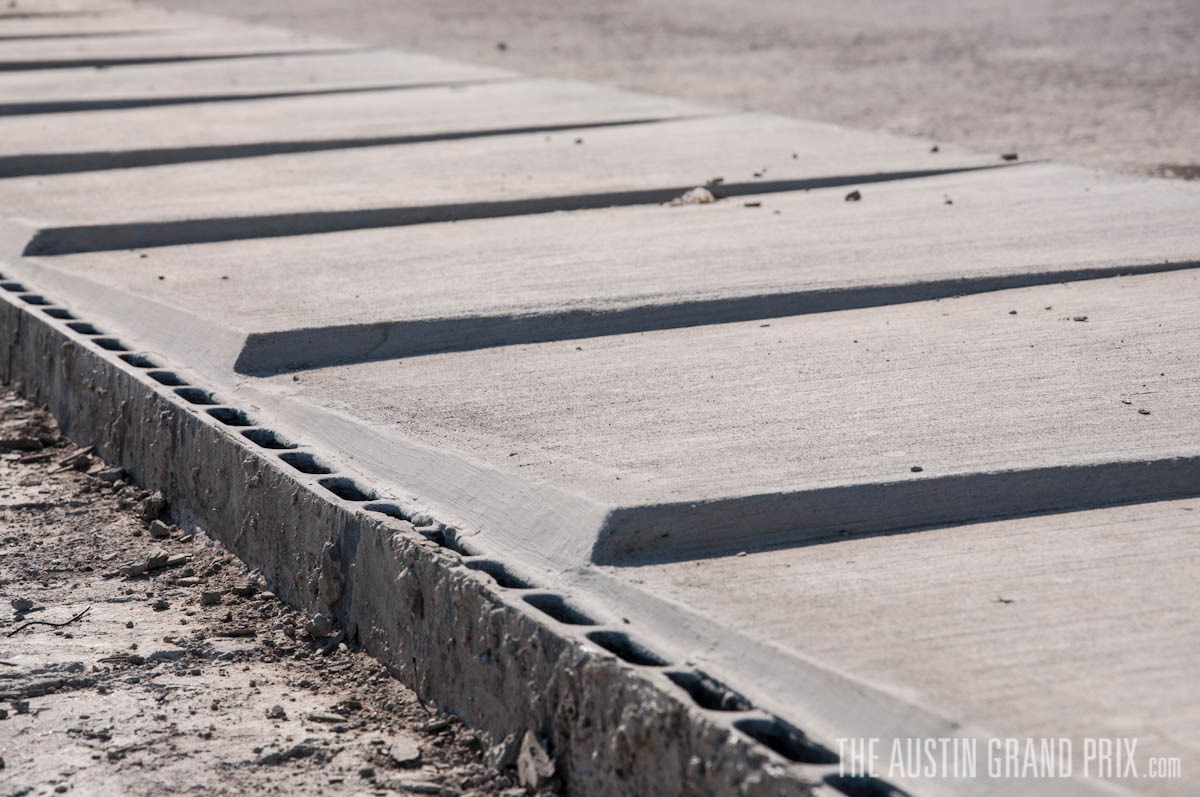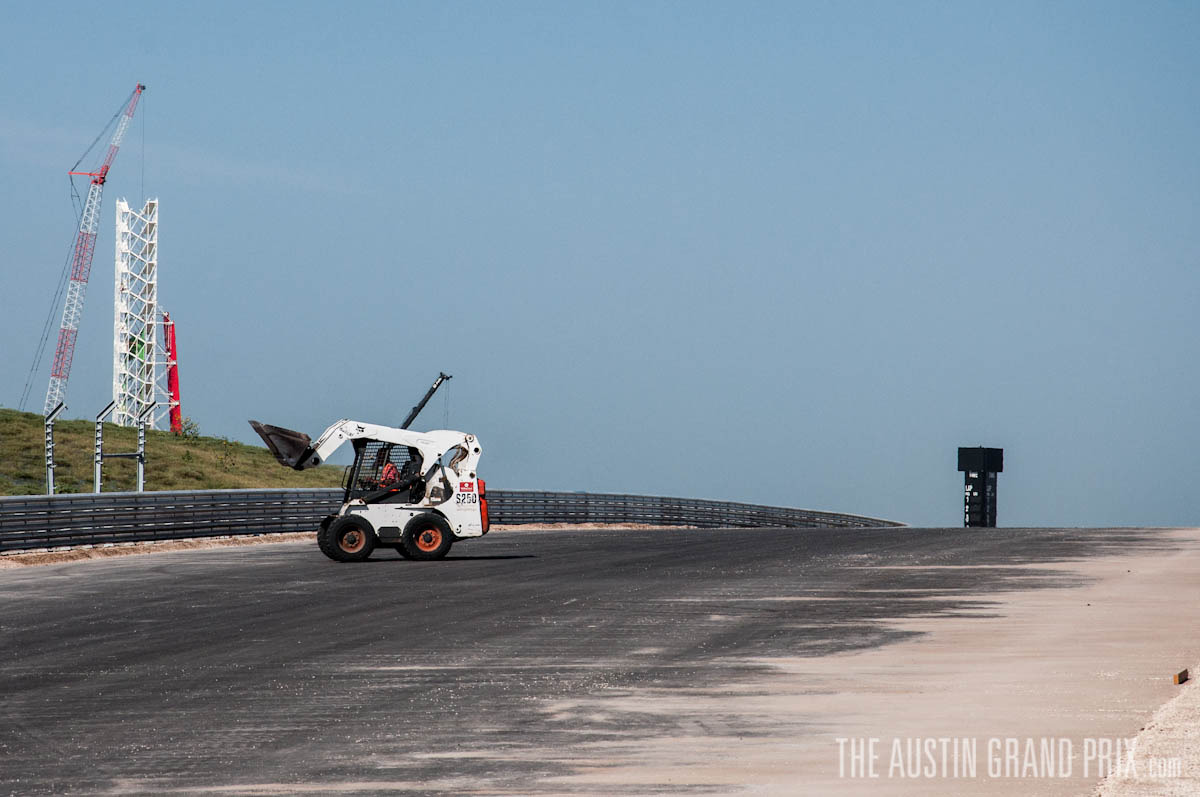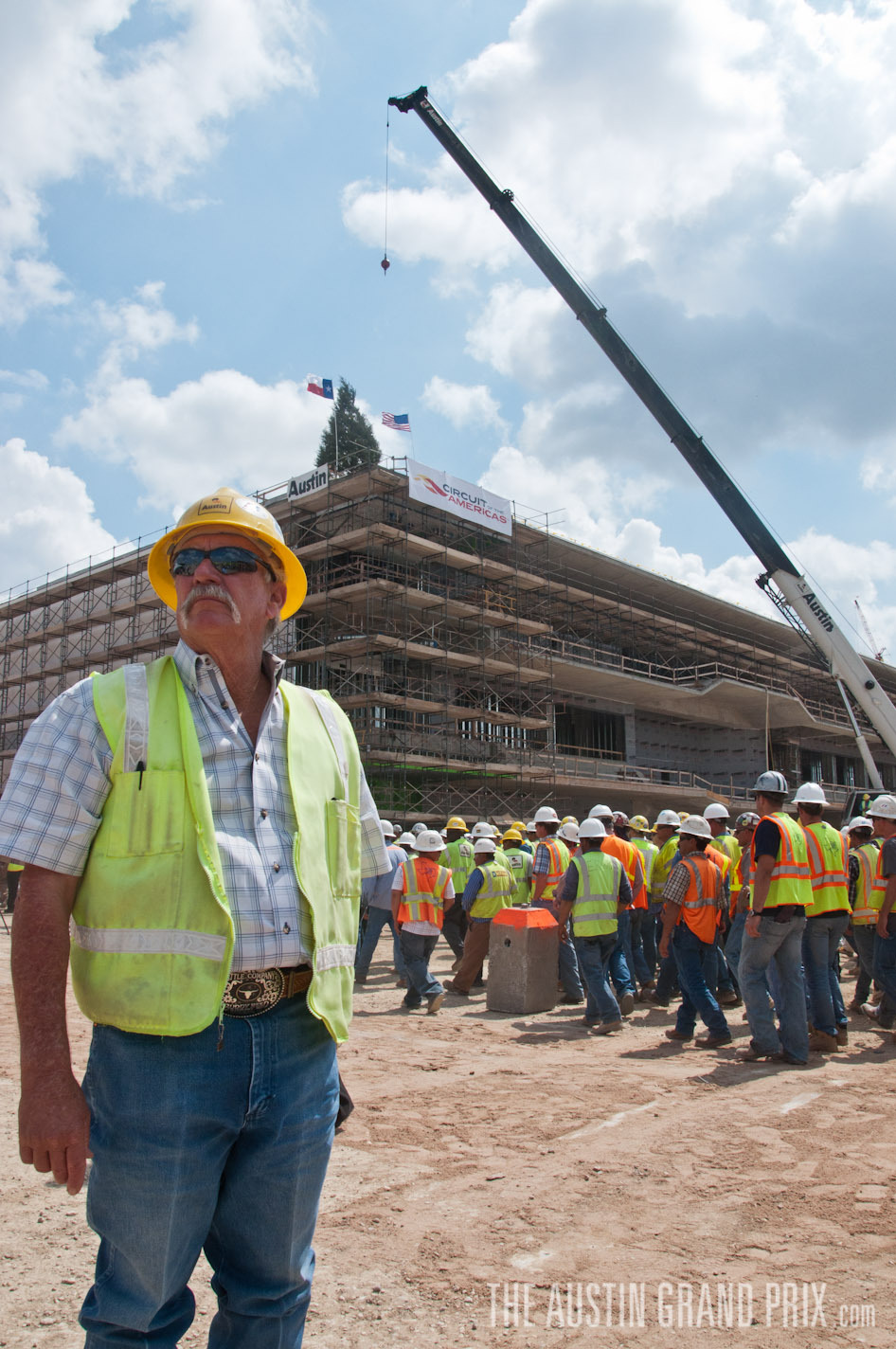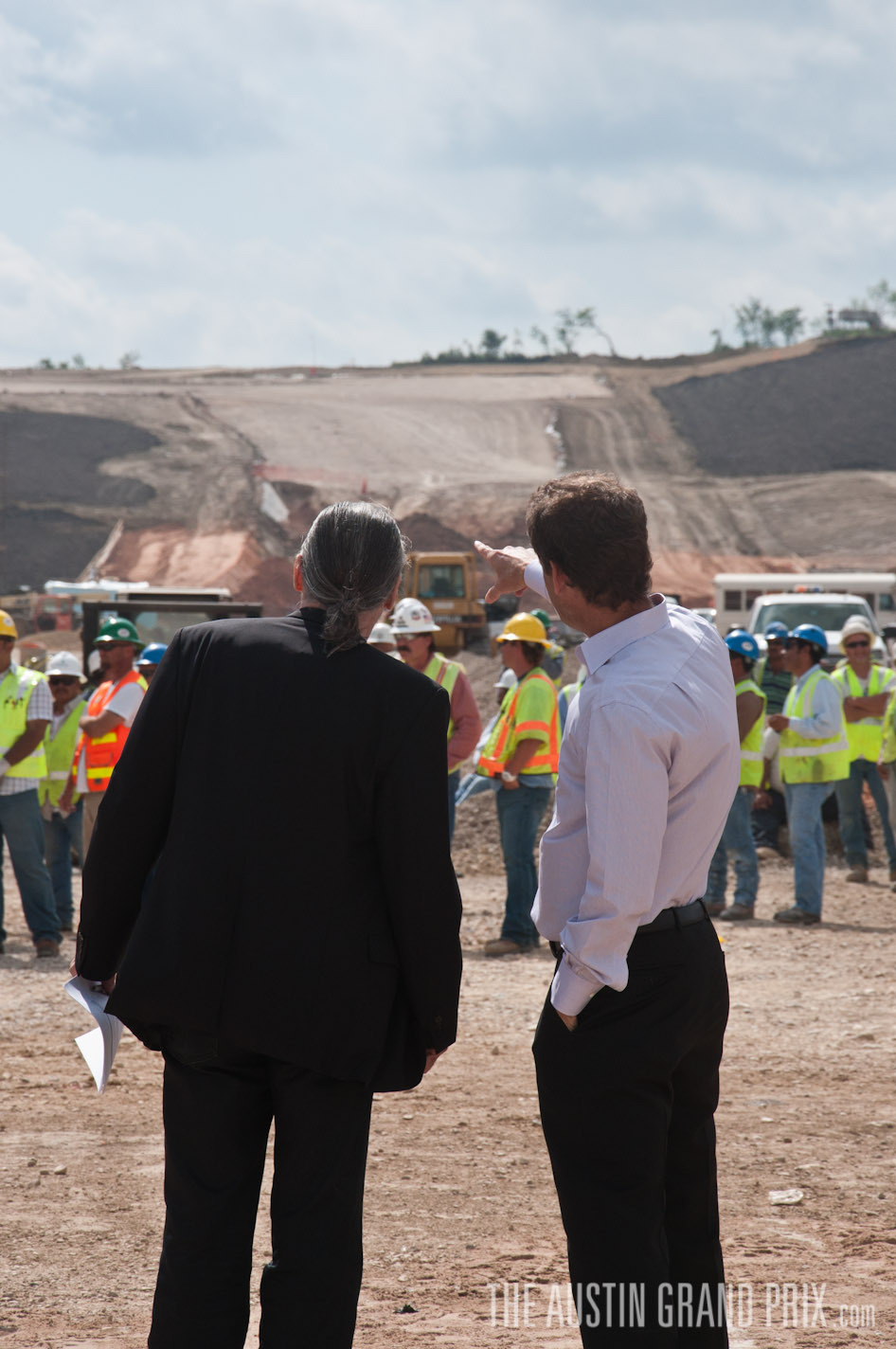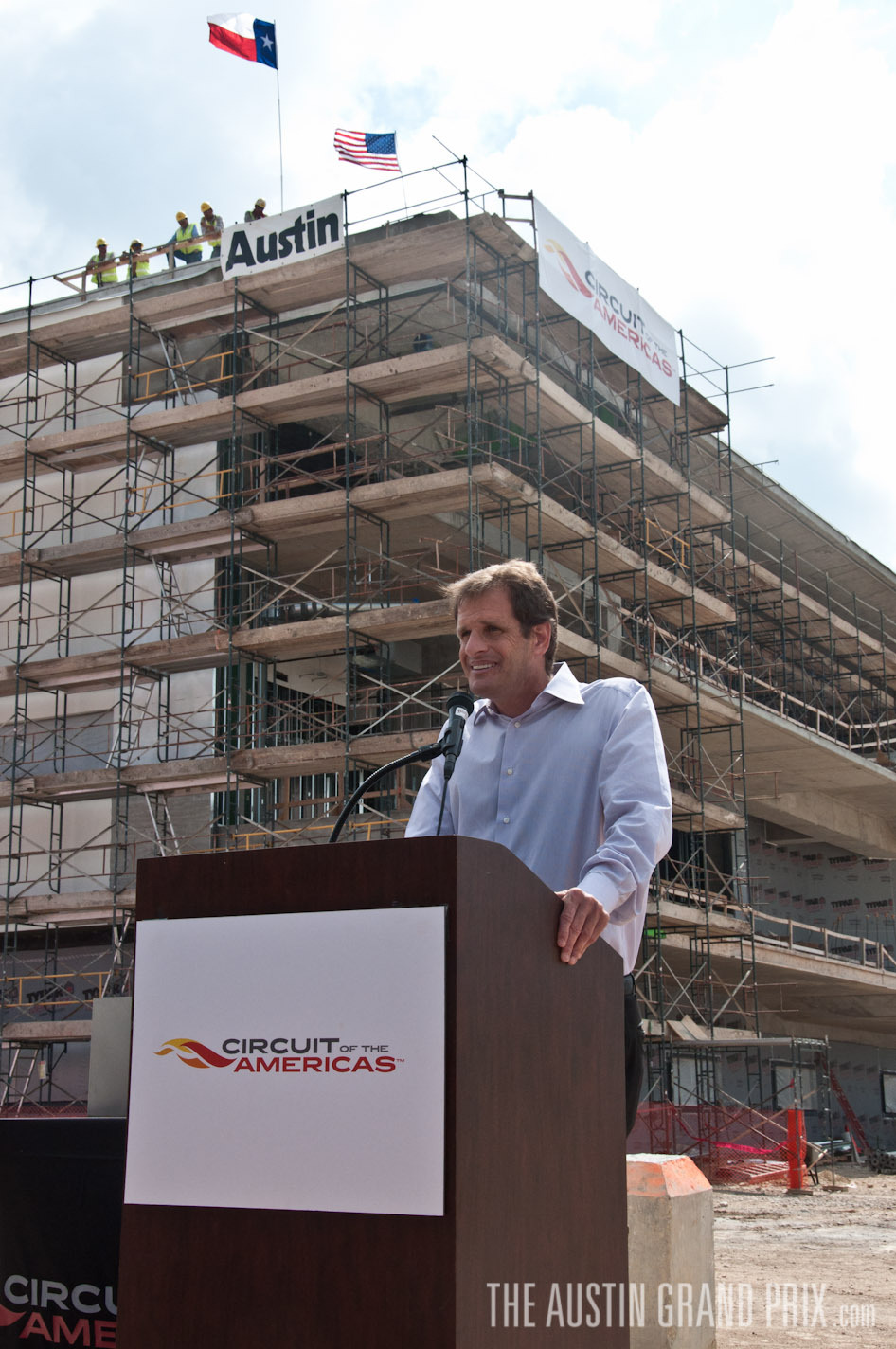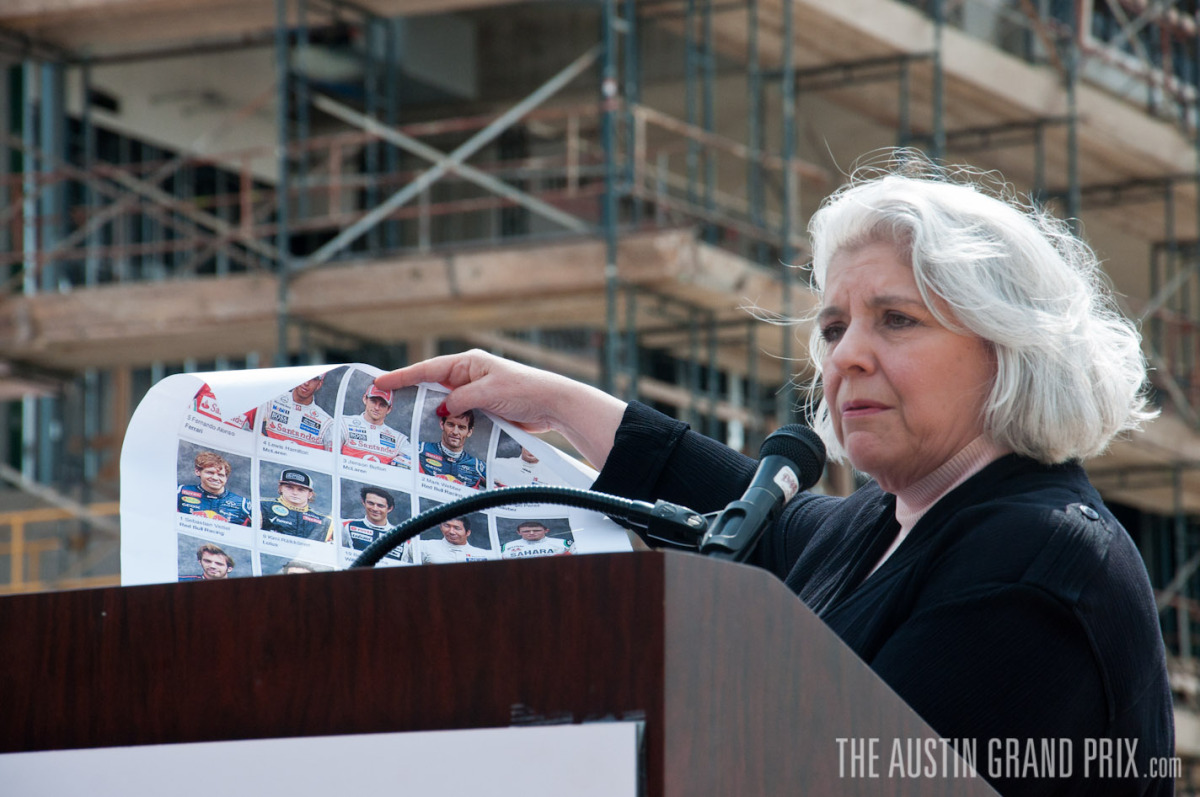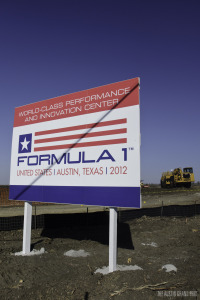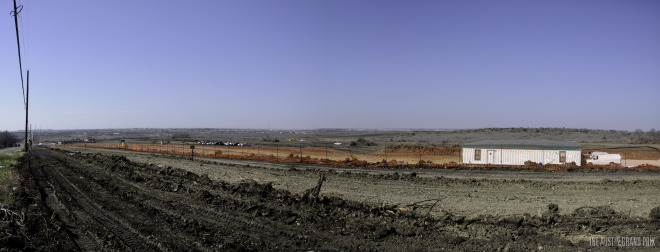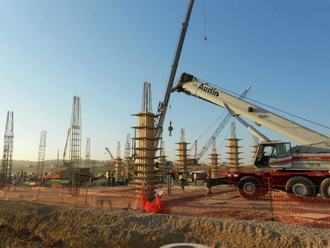 COTA Paddock Building-Nov 1, 2011, source: COTA//Overview
COTA Paddock Building-Nov 1, 2011, source: COTA//Overview
Vertical construction is taking shape at Circuit of The Americas with more and more evidence of progress each day. Recent photos published by COTA give us an inside look at the stages of construction at various portions of the facility such as the retaining walls around the turns and the highly complex paddock building.
For those interested in the technicality of it, we're going to take a closer look at the photos and provide an architectural analysis of the construction in progress. I could rattle on about the different types of A325 steel bolts, or hold a conversation about the Dead and Live loads of the building speaking only in Kips (1Kip = 1000lbs), but that wouldn't likely be all too appealing. Instead, we're going to use photos and illustrations to explain what's happening at Circuit of The Americas.
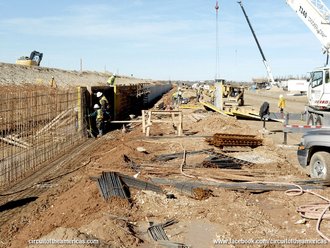
 Retaining walls at COTA-Dec 21, 2011; source: COTA
Retaining walls at COTA-Dec 21, 2011; source: COTA
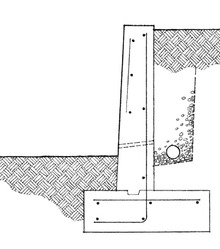 Example of retaining wall; source: Building Construction Illustrated//Retaining Walls
Example of retaining wall; source: Building Construction Illustrated//Retaining Walls
From photos released as early as October 26th, we can see evidence of retaining wall construction around the track. With a high degree of elevation variability, the track design calls for a substantial amount of retaining walls to assist in the retention of earth and allow for drastic shifts in elevation. Keep in mind that soil can only be modified to 1:4 rate (1 foot rise per 4 feet length) and anything beyond this requires a retaining wall to hold it back.
In these photos from COTA, we can see retaining walls from approximately 8ft to 15ft tall, all constructed with site-cast concrete. Site-casting is the term for concrete structures that Example of Wall form-work; source: Building Construction Illustrated are constructed on site with wooden or metal forms to shape the concrete. From the illustration of an example retaining wall, we can see that there are two pieces, the footing at the bottom, and a wall which sits on top. The footings are poured first, and then the wall is poured, both with lots of steel reinforcement to increase strength. From the photos of the retaining walls, we can see evidence of these different components as workers construct form-work and tie steel reinforcement to prepare for the addition of concrete.
Example of Wall form-work; source: Building Construction Illustrated are constructed on site with wooden or metal forms to shape the concrete. From the illustration of an example retaining wall, we can see that there are two pieces, the footing at the bottom, and a wall which sits on top. The footings are poured first, and then the wall is poured, both with lots of steel reinforcement to increase strength. From the photos of the retaining walls, we can see evidence of these different components as workers construct form-work and tie steel reinforcement to prepare for the addition of concrete.
While not the most glamorous of features at COTA, retaining walls are an essential part of the design of the facility. They provide a tool for designers to add elevation shifts and minimize the cost of reshaping the land, and therefore an integral part of the 133ft of elevation change at Circuit of The Americas.

 Drilling foundation piers for paddock building-Oct 13, 2011; Preparing second level form-work-Dec 20, 2011; source: COTA//Paddock Building
Drilling foundation piers for paddock building-Oct 13, 2011; Preparing second level form-work-Dec 20, 2011; source: COTA//Paddock Building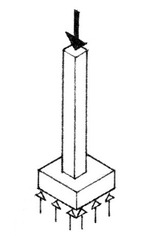 Example of spread footing foundation pier; source: Building Construction Illustrated
Example of spread footing foundation pier; source: Building Construction Illustrated
The construction of the paddock building is the most visible portion of the facility at this point in time. Positioned just in front of the main straight and playing host to a highly dense set of activities, this is the most complex portion of the facility and likely to the be the most architecturally interesting.
In the first photos released in October, we can see the foundation piers for the paddock being drilled with large machinery. The design of these foundation piers is extremely critical due to the type of soils in this region which are comprised mostly of expansive clays (Houston Black, Ferris-Heiden, and Burleson if you want to get specific). While it's not possible to determine the exact type of pier being used for the paddock building from the photos, the expansive clay would likely work better with spread footings like in the illustration, or even conventional concrete piers drilled to subsurface bedrock 50-80ft below the surface.
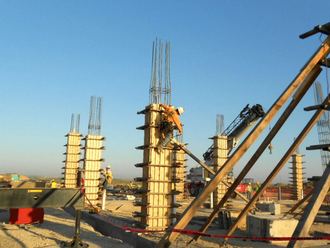 Columns for the paddock building-Nov 1, 2011; source: COTAOnce these piers were finished, the site quickly began showing evidence of progress as columns and foundations were poured for the Paddock. The columns, like the retaining walls, are also site-cast, and as you can see in the photo, require a lot of reinforcement and form-work to support the shape and size of the column. Once poured, they can support substantial weight and long spans between columns, allowing the most amount of flexibility for customization and providing each racing team with a large open garage to work within.
Columns for the paddock building-Nov 1, 2011; source: COTAOnce these piers were finished, the site quickly began showing evidence of progress as columns and foundations were poured for the Paddock. The columns, like the retaining walls, are also site-cast, and as you can see in the photo, require a lot of reinforcement and form-work to support the shape and size of the column. Once poured, they can support substantial weight and long spans between columns, allowing the most amount of flexibility for customization and providing each racing team with a large open garage to work within.
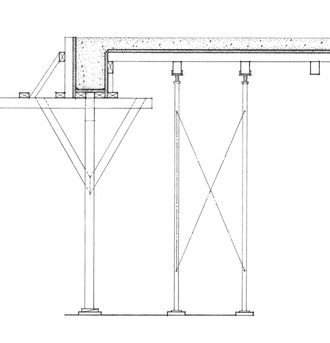
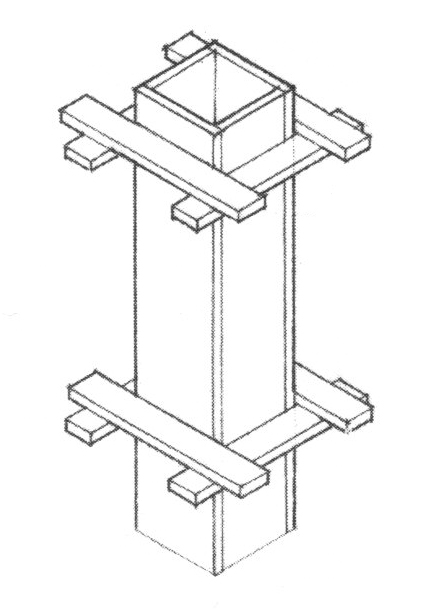 Form-work for second level concrete slab, and concrete column form-work; source: Building Construction Illustrated
Form-work for second level concrete slab, and concrete column form-work; source: Building Construction Illustrated
//Summary
The construction of the circuit will be quite interesting over the next year. From an architectural perspective, it's difficult to get a sense of the project because a majority of work this past year focused on ground manipulation and infrastructure. As the buildings start to take shape and we see vertical construction fully underway, a clearer picture of Circuit of The Americas will come into focus.
The past year in Austin has been one for the record books with some of our lowest precipitation counts in history. While this has wreaked havoc on many industries in the state, construction has continued to progress at the circuit, as evidenced by increasingly visible signs of progress. While the impact of the delays from the contract negotiations has yet to cause the site crews to go into double or triple shift days, we'll continue to monitor the construction progress and update you as we race towards our 2012 inaugural race.



